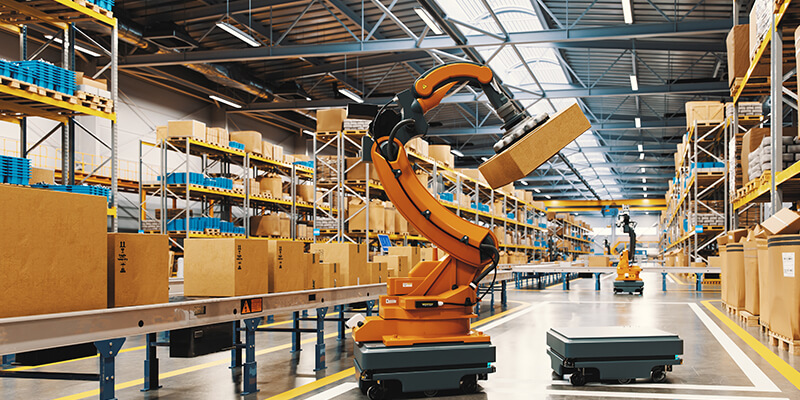Reimagining Industrial Real Estate in the Age of AI

By Brielle Scott for Market Share Blog | October 28, 2025
Artificial intelligence is transforming the industrial real estate landscape in profound and sometimes paradoxical ways. As AI technologies become more embedded in logistics, fulfillment and manufacturing, they influence both the demand for warehouse space and the nature of the workforce inside these facilities.
A new report by the NAIOP Research Foundation, “From Static to Strategic: AI’s Role in Next-Generation Industrial Real Estate,” examines how AI is affecting industrial building development and shaping the systems within these buildings.
AI’s impact on warehouse demand is multifaceted. On one hand, it fuels e-commerce growth through personalized recommendations, dynamic pricing and automated marketing, driving increased demand for storage and fulfillment space. On the other hand, AI also enables more accurate sales forecasting and space optimization, allowing companies to do more with less. Some businesses are already reporting significant reductions in the amount of space needed to maintain service levels, thanks to smarter inventory management and automation.
This means that while overall square footage demand may fluctuate, the value of warehouse space is rising. More productive, AI-enabled facilities are commanding higher rents, as occupiers are willing to pay a premium for efficiency, speed and reliability.
AI is also giving rise to entirely new types of industrial buildings. Hyperlocal delivery models, powered by AI logistics optimization, are driving the growth of micro-fulfillment centers – smaller warehouses located closer to consumers in urban areas. These facilities prioritize speed and proximity over scale, reshaping the traditional distribution model.
Meanwhile, companies like Aibuild are pioneering the concept of smart, sustainable manufacturing hubs that combine on-demand 3D printing, robotic fulfillment, and AI-driven operations. Global giants such as Tesla and Foxconn are investing heavily in this vision, which could reduce the need for traditional inventory storage altogether. In this future, manufacturing and fulfillment may happen simultaneously within buildings that once served solely as warehouses.
View archived blog posts at: http://naiopcharlotte.wordpress.com
